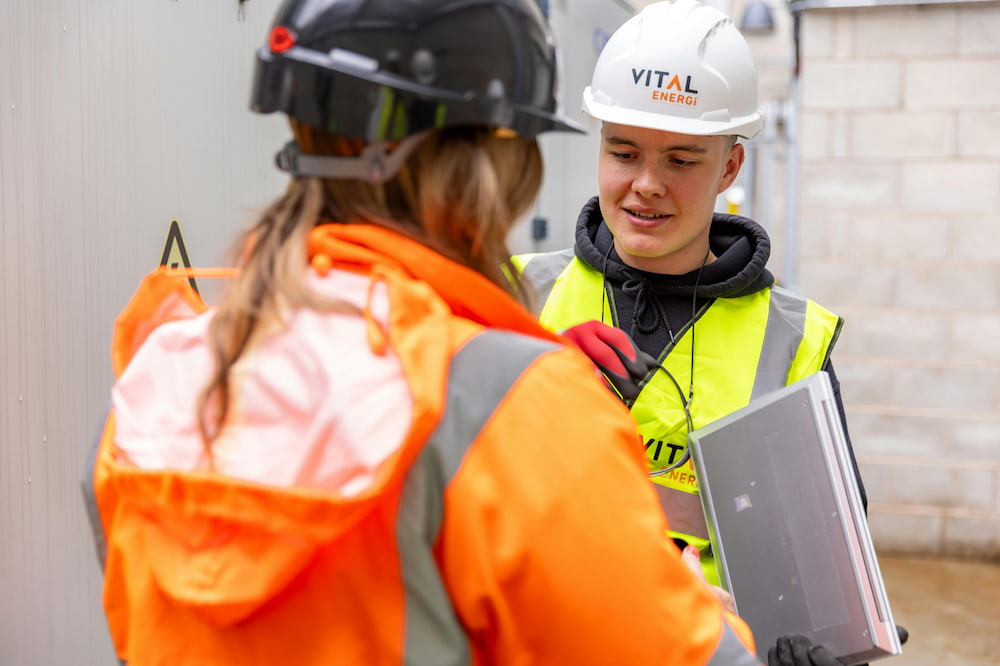The construction industry plays a critical role in shaping our built environment, and with that responsibility comes the need to prioritise sustainability.
As the global population continues to grow and urbanise, the demand for resource-efficient, environmentally friendly construction methods has never been higher.
Incorporating sustainability in construction not only contributes to reducing our environmental footprint, but also provides long-term financial benefits, improves public health, and preserves resources for future generations.
In this blog post, we will explore the importance of sustainable construction practices and how developers could implement green solutions into their construction projects.
Keep reading to learn more.
What is sustainability in construction?
Sustainability in construction refers to the practice of designing, constructing, and operating buildings with a focus on minimising their environmental impact while maximising their social and economic benefits.
This involves using eco-friendly materials, implementing energy-efficient systems, reducing waste generation, and creating healthy indoor environments.
The primary aim of sustainable construction is to minimise the depletion of natural resources, reduce greenhouse gas emissions, and promote the well-being of both occupants and the surrounding community.
As a result, sustainable construction plays a vital role in modern construction projects and the designs of contemporary buildings.
Why is sustainability important in construction?
Considering that the construction industry makes up 36% of global energy use and 40% of total CO2 emissions, it’s clear to see why sustainability in construction is important.
Moreover, new data shows that building and construction works also account for up to 40% of solid waste generation and 30% of global raw materials.
However, in addition to the environmental impact, sustainability in construction is crucial for the long-term economic and social prosperity of communities.
By adopting sustainable construction practices, developers can reduce operational costs, increase the lifespan of structures, and enhance property values.
Sustainable buildings provide healthier living and working environments for occupants, improving their well-being and productivity. In turn, this can contribute to a better quality of life and stronger local economies.
As urban populations continue to grow, the demand for sustainable construction will only increase, making it a key strategy in addressing the pressing challenges of our time, such as climate change, resource scarcity, and social inequality.
Benefits of sustainable construction
There are many benefits to sustainability in the construction industry, covering multiple aspects of the industry, including:
Environmental benefits
The environmental benefits of sustainability in the construction industry are manifold and far-reaching.
By prioritising eco-friendly building materials and practices, sustainable construction helps to preserve ecosystems, conserve natural resources, and reduce energy consumption.
Consequently, this leads to a decrease in greenhouse gas emissions and a lower carbon footprint for the built environment.
Additionally, green construction methods can contribute to improved water management, waste reduction, and the promotion of biodiversity.
Social benefits
The social benefits of sustainability in the construction industry are equally significant, fostering a sense of community and well-being among inhabitants.
Sustainable buildings are designed with features that promote healthier indoor environments, such as increased natural light, better air quality, and access to green spaces.
These elements contribute to improved physical and mental health for occupants, leading to higher productivity and overall satisfaction.
A business could add social value to a project by using sustainable construction practices that often place an emphasis on local materials and labour, bolstering local economies and creating job opportunities.
Through Corporate Social Responsibility (CSR), businesses can take responsibility for the environmental, social, and economic impact of their projects. This allows developers to demonstrate their commitment to sustainable development and create a positive public image.
Financial benefits
By incorporating sustainable practices and materials, developers can significantly reduce long-term operational costs, such as energy, water, and maintenance expenditures.
Additionally, sustainable buildings tend to have a higher market value, making them an attractive investment for stakeholders.
As more consumers become environmentally conscious, the demand for eco-friendly properties continues to rise, offering a competitive advantage to those embracing sustainable construction.
Challenges within sustainable construction
Although 90% of businesses think sustainability is a vitally important practice to adopt, only 60% of companies actually have sustainable strategies. To top that, 34% of firms have reported that clients show demand for green buildings, suggesting that this demand won’t die down anytime soon.
It’s clear to see that despite the numerous benefits of sustainability in construction, several challenges still need to be addressed to fully realise its potential.
One of the primary obstacles is the initial cost involved in implementing sustainable practices and materials, which can be higher than conventional construction methods.
For example, in 2018, 40% of UK firms reported that budgetary requirements were the biggest obstacle they faced when attempting to adopt sustainable construction practices, with nearly 50% of firms stating that they expected green buildings to incur higher costs.
This can deter developers from adopting eco-friendly approaches, particularly in regions where financial incentives and regulations supporting sustainable construction are lacking.
Furthermore, sustainable construction projects often require extensive collaboration and coordination between various stakeholders, which can be complex and time-consuming.
To overcome these challenges, increased awareness, investment, and policy support are essential to drive the paradigm shift towards a more sustainable construction industry.
How to achieve sustainability in construction?
Although there are several clear benefits to sustainability in construction, it is not a quick-fix process. But that’s not to say it’s an impossible task.
In fact, as technology advances and more sustainable alternatives become available, the cost of these greener solutions becomes more affordable.
So, how can these challenges be overcome to achieve sustainability? Below are three ways developers can adopt sustainable practices:
Sustainable materials
Utilising sustainable materials is perhaps the most obvious way to achieve sustainability in construction.
By opting for materials such as responsibly sourced wood, sustainable concrete, and alternative building blocks made from wool and mud, developers can significantly reduce the environmental impact of their projects.
These materials often have lower embodied energy, meaning fewer resources and emissions are involved in their production, transportation, and disposal.
Additionally, sustainable materials are typically more durable and require less maintenance, extending the lifespan of buildings and reducing waste generation.
By integrating sustainable materials into construction projects, developers not only contribute to a greener built environment but also promote a more circular economy, in which resources are preserved and reused to their maximum potential.
Plastic construction materials
Plastic construction materials, when used responsibly, can contribute to achieving sustainability in construction.
By repurposing and recycling discarded plastics into durable, long-lasting building materials, the industry can reduce both waste generation and the demand for raw materials.
These materials, such as recycled plastic lumber, can be resistant to moisture, insects, and rot, requiring less maintenance and replacement over time.
Furthermore, incorporating plastics in construction can lead to weight reduction and improved insulation properties, resulting in energy savings and lower greenhouse gas emissions.
By adopting plastic construction materials as an alternative to traditional resources, developers can promote a more sustainable and circular approach to construction, minimising the industry’s impact on the environment.
Renewable energy on the construction site
Incorporating renewable energy sources on construction sites is yet another effective approach towards achieving sustainability in construction.
By harnessing power from renewable resources such as solar, wind, and geothermal energy, the industry can significantly reduce its reliance on fossil fuels, consequently lowering greenhouse gas emissions and environmental impacts.
The use of renewable energy technologies, such as solar panels, wind turbines, and geothermal systems, on construction sites can help power heavy machinery, tools, and site lighting, leading to substantial energy savings.
Moreover, integrating renewable energy solutions into the design and operation of finished buildings can further contribute to sustainable development, ensuring long-term energy efficiency and reduced carbon footprints.
As the global push towards cleaner energy transitions continues, embracing renewable energy in construction projects is becoming increasingly vital to achieving sustainability and mitigating climate change.
How sustainable is my construction site?
Whether it’s due to budgetary needs or a client’s outlook, achieving sustainability within a construction project takes time, planning and knowledge.
That’s why Compliance Chain is developing one-of-a-kind software to help developers stay on track during public and private sector projects.
Come back soon to hear more about how you can use Compliance Chain to monitor the sustainability of your construction project.
Until then, you can use the platform to monitor supply chain management, project management, social value delivery and more.
Contact a member of the Compliance Chain today to discover more about the platform and how it can take the compliance of your construction project to the next level.

Beth supports users to optimise solutions, ensuring the success of clients’ projects. She actively listens to industry feedback, contributing to the ongoing development of software solutions.



